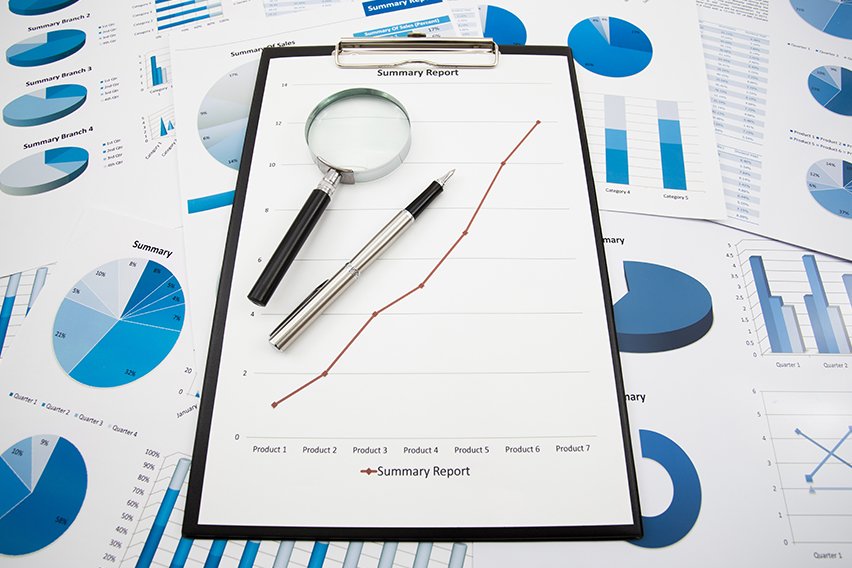Debits and Credits Cheat Sheet: A Handy Beginner’s Guide

Debits and credits seem like they should be 2 of the simplest terms in accounting.
But then people start throwing around terms like “asset accounts” and “income accounts” and phrases like “double-entry bookkeeping.” Suddenly, the whole credit and debit conversation gets more complicated.
For that reason, we’re going to simplify things by digging into what debits and credits are in accounting terms.
In this article, we’ll cover:
What Are Debits and Credits in Accounting?
Debits and Credits Accounting Formula
Basic Accounting Debits and Credits Examples
What’s the Difference Between Debits and Credits?
How Accounts Are Affected by Debits and Credits
What Are Debits and Credits in Accounting?
Debit means to deduct or reduce. We see a clear example of this with debit cards. When you complete a transaction with one of these cards, you make a payment from your bank account. As such, your account gets debited every time you use a debit or credit card to buy something.
The same happens in business. You buy an asset, such as office equipment. You debit the value of that asset from your account.
Using credit is different because it means you exceed the finances available to your business. Instead, you essentially borrow money, similar to how you would with a bank loan.
Credit cards are the perfect example. They let us buy things that we don’t have the immediate funds to purchase. A creditor extends a line of credit. You pay monthly fees, plus interest, on anything that you borrow.
These definitions become important when we use the double-entry bookkeeping method. With this approach, you post debits on the left side of a journal and credits on the right. The total dollar amount posted to each debit account has to be equal to the total dollar amount of credits.
If they’re not, you have a problem. And good accounting software will highlight that problem by throwing up an error message.

Debits and Credits Accounting Formula
You can use debits and credits to figure out the net worth of your business. Accounting applies the concepts of debits and credits to your assets, equity, and liabilities. A combination of these 3 items makes up the common sense formula for basic accounting:
- Liabilities are what your business owes. Examples include interest payments on an overdraft facility or money owed for utilities.
- Assets are things your business owns. Your building, the company’s bank balance, and the equipment used to operate your business go here.
- Equity is basically the total dollars left in your business when you’ve paid off your liabilities.
We can use a basic formula to figure out how much equity a business has:

Basic Accounting Debits and Credits Examples
Your goal with credits and debits is to keep your various accounts in balance. Let’s look at an example using the above equations.
We’ll assume that your company issues a bond for $50,000, which leads to it receiving that amount in cash. As a result, your business posts a $50,000 debit to its cash account, which is an asset account. It also places a $50,000 credit to its bonds payable account, which is a liability account.
Plug these numbers into the formula and you get:
$50,000 = $50,000 + $0
Note that this means the bond issuance makes no impact on equity. Consequently, you get a balanced equation.
How FreshBooks Can Help
Are you confused about your bookkeeping? Perhaps you need help balancing your credits and debits on your income statement.
At FreshBooks, we help you protect your profits and time with a powerful bookkeeping service. By integrating with Bench, we help you track every dollar you spend while Bench handles bookkeeping and tax preparation. With us, you’ll know your business so you can grow your business. Find out more about what FreshBooks can do for you.
What’s the Difference Between Debits and Credits?
The difference between debits and credits lies in how they affect your various business accounts.
A debit in an accounting entry will decrease an equity or liability account. But it will also increase an expense or asset account.
A credit increases your liability and equity accounts. But it decreases your asset and expense accounts.
There is also a difference in how they show up in your books and financial statements. Credit balances go to the right of a journal entry, with debit balances going to the left. As mentioned, your goal is to make the 2 columns agree.
Debits and Credits Chart
It can get difficult to track how credits and debits affect your various business accounts. This cheat sheet helps you to keep track.
Debits
- Debits increase asset accounts
- Debits increase expense accounts
- Debits decrease income accounts
- Debits decrease equity accounts
- Debits decrease liability accounts
- Debits are always recorded on the left when a financial transaction occurs
Credits
- Credits decrease asset accounts
- Credits decrease expense accounts
- Credits increase income accounts
- Credits increase liability accounts
- Credits increase equity accounts
- Credits are always recorded on the right when a financial transaction occurs

How Accounts Are Affected by Debits and Credits
Liability Accounts
Imagine that you want to buy an asset, such as a piece of office furniture. So, you take out a bank loan payable to the tune of $1,000 to buy the furniture.
With the loan in place, you then debit your cash account by $1,000 to make the purchase.
That seems simple enough. You’ve spent $1,000 so you increase your cash account by that amount. But you also took out a loan to buy the furniture.
So you’d have to record the transaction as a $1,000 debit in your cash account and a $1,000 in your bank loan account. The latter is a liability account.
Equity Accounts
Let’s assume that a friend invests $1,000 into your business. Immediately, you can add $1,000 to your cash account thanks to the investment.
However, your friend now has a $1,000 equity stake in your business. So, your equity account also increases by $1,000.
In this case, the $1,000 paid into your cash account is classed as a debit. But the $1,000 in your equity account is a credit. Credit increases equity, as we established before.
Key Takeaways
There’s a lot to get to grips with when it comes to debits and credits in accounting. Every transaction your business makes has to be recorded on your balance sheet.
When you deposit money, you create credits and debits. The same goes for when you borrow and when you give up equity stakes. All of these numbers need balancing.
Use the cheat sheet in this article to get to grips with how credits and debits affect your accounts. As a general rule, if a debit increases 1 type of account, a credit will decrease it. The opposite also applies.
Frequently Asked Questions
Do debits and credits have to be equal on a trial balance?
The total of your debit entries should always equal the total of your credit entries on a trial balance.
How does debit credit work in real estate?
Debits and credits tend to come up during the closing periods of a real estate transaction. The purchase agreement contains debit and credit sections. The debit section highlights how much you owe at closing, with credit covering the amount owed to you.
What are debits and credits on the balance sheet?
This depends on the area of the balance sheet you’re working from. For example, debit increases the balance of the asset side of the balance sheet. Credit decreases it. That rule reverses for the liabilities side of the sheet.
How to reconcile debits and credits in Excel?
You can set up a solver model in Excel to reconcile debits and credits. List your credits in a single row, with each debit getting its own column. This should give you a grid with credits on the left side and debits at the top.
From here, you can create several sum formulas that demonstrate whether the figures you’ve entered balance out.
RELATED ARTICLES

 What Are Profitability Ratios? Definition, Types & Importance
What Are Profitability Ratios? Definition, Types & Importance Customer Profitability Analysis: Definition, Formula & How-to Guide
Customer Profitability Analysis: Definition, Formula & How-to Guide What Is a Good Current Ratio?
What Is a Good Current Ratio? Profitability Index: Definition & Calculation
Profitability Index: Definition & Calculation Advantages and Disadvantages of Profitability Index
Advantages and Disadvantages of Profitability Index All About Profit Centers
All About Profit Centers